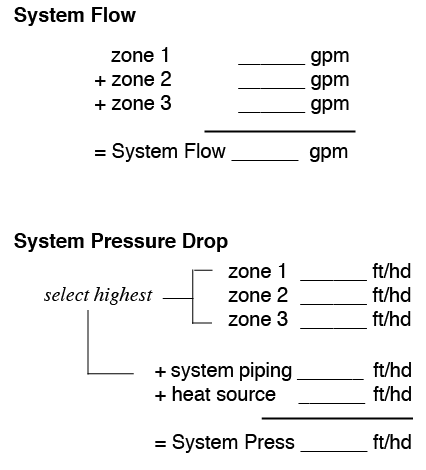INDEX
Getting Started
Heat Load
.....heat loss basics
Floor Output
Floor Covering
Floor Surface Temp.
Average Water Temp.
Supply Water Temp.
Tube Selection and Size
Tube Spacing
Total Tube Required
Tube Circuit Length
Number of Circuits
Actual Circuit Length
Flow Per Tube
Pressure Drop
Summarize Circuits
System Flow
System Pressure Drop
• SAVE AND DOWNLOAD YOUR 'WORKSHEET' to an XLSX file.
• Start a new 'WORKSHEET' for each zone.
MULTI-ZONE SYSTEMS
• A full multi-zone Excel Spread Sheet download is available here for your computer
(IMPORTANT: this is not the same as the 'WORKSHEET']
18. Summarize Circuits
Record all the information you have calculated for all of your circuits. Find the tube circuit that has the highest pressure drop for that zone. Use this pressure drop as representative of the entire zone.
Do not add the tube circuit pressure drops together!
example: 3.2 ft of hd is the highest tube circuit pressure drop. That becomes the ZONE pressure drop
Pumps must be sized according to flow and pressure drop. To calculate system flow you must add together the flows required in each zone.
For pressure drop you must choose the zone with the highest pressure drop and then add the supply and return piping. To this you must add the heat source piping, appliances and fittings.
It is beyond the scope of the RadPad© to aid in the design of the heat source and primary plumbing. Use manufacturerʼs instructions and standard hydronic practices to design and install the system.
